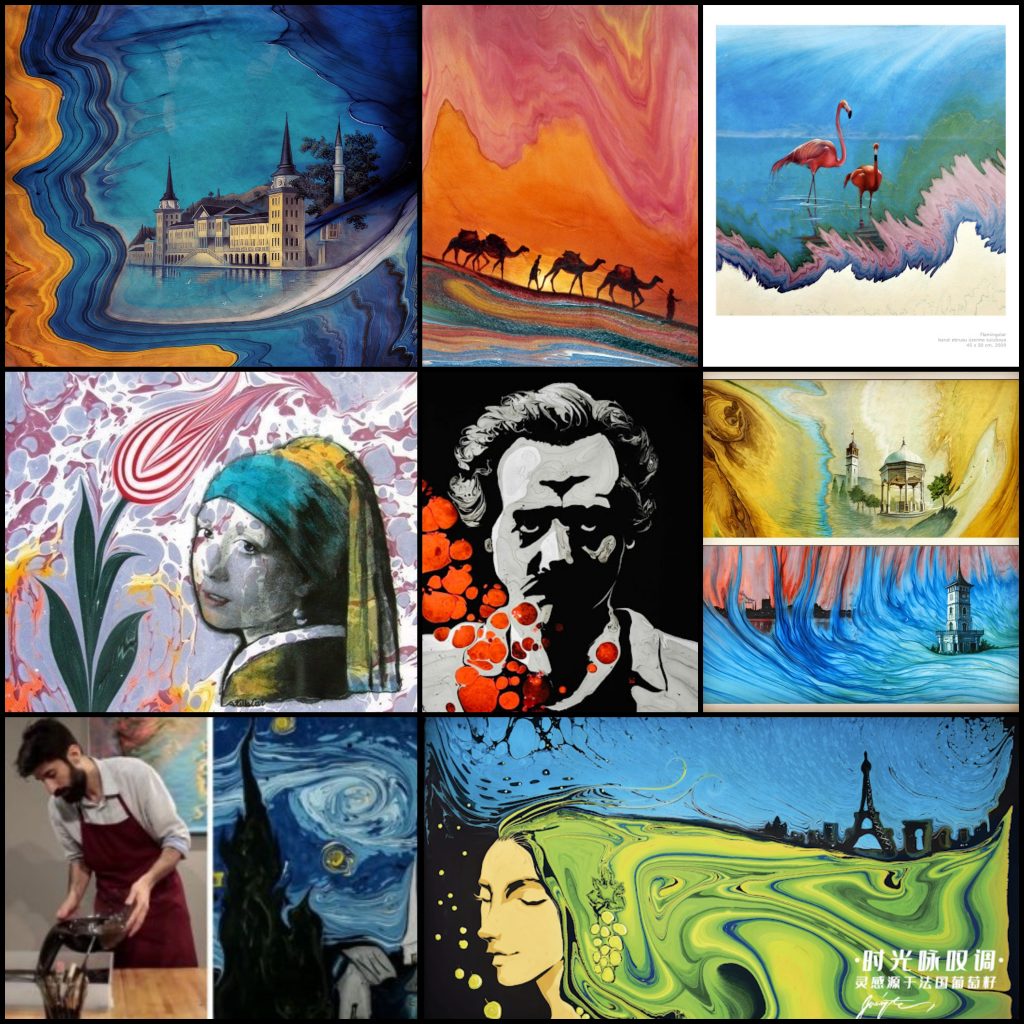
Ebru art: Discover traditional turkish “cloud art”
Have you ever seen a modern abstract painting and thought about what inspired them? Well, we can’t answer this question for all modern artworks, but we will tell you that abstract art style isn’t as new as you think. Curiously, traditional Turkish ebru art paintings resemble very much some abstract modern paintings, but their origins are much more ancient.
Water is considered the source of life and the word “ebru” means “cloud art”. This beautiful technique of painting is still used by many artists who want to show another representation of the world. Ebru is a traditional Turkish marbling art style created in the 13th century and still in use nowadays. In 2014 UNESCO declared ebru marbling an Intangible Heritage of Humanity.
How is Ebru art made?
The ebru technique is quite interesting and bizarre: color pigments are dropped and extended in a rectangular recipient filled with water and oil creating changing and unique patterns. Painting techniques require sprinkling and brushing different colors with a lot of precision, because patterns are altered very easily while being moved. The painting changes everytime you add new colors and shapes to the surface.
Even nowadays ebru paintings are still made with ancient materials. The color paste is made with natural pygments of colored rocks and earth; metals with oxide that can’t dissolve in water and do not contain oil. Black pigments come from chimney roots. white from cerussite, yellow is arsenic sulfide and blue is extracted from indigo, most of it from Pakistan. But the most common colors are light green, red and yellow. In order to get the color paste pigments are mixed first with water and then with oxgall. After one or two months of preparation and resting in a jar it is ready to use for painting.
The water and oil-filled recipient is also covered with drops of oxgall, a natural acid that helps colors stay on the surface. Most oxgall comes from cow’s liver secretion, but it can also be taken from sheeps. Oxgall also makes colors more liquid and regulates their tension, preventing them from mixing with each other. Therefore you’ll see how each color creates its own shape and is separated from other colors.

When you start painting there are many materials that you can use to create your own personal shapes and patterns. Each artist has its own brushes made from old horse hairs and dried rose twigs. With combs you can make and shape the patterns, and awls serve for dropping the color pigments in spherian shapes. After the painting is finished, it is put into paper, which after drying out is burnished so that it doesn’t wrinkle.
An ancient tradition
Ebru art originated in 13th century Central Asia and throughout the years it spread to Anatolia and the Mediterranean. During the 15th century different ebru techniques and materials were developed in Persia and the geographical areas of current Turkey, Spain, France and Italian Venice and Florence.
In the 1850s ebru techniques drew the attention of English and Dutch book printers. Ebru paintings took part in the European printing revolution, being used for book covers, bookbinders and calligraphy. On the other side of the European continent ebru technique kept its traditional decorative and artistic usage. Ebru art was distinguished geographically not only by its different uses, but also its style; in south and central Europe it was more common to draw figures and animals, than in the Ottoman empire and modern Turkey, where flowers, oliage, ornaments and non-figurative designs were preferred.
Nowadays ebru paintings are made in the form of paintings, but also picture frames, lamp shades and even wine labels.

Modern Ebru artists
If you want to try ebru art we’ll let you know that ebru painting is becoming more and more popular in Turkey. Many free or cheap workshops from public governments, NGOs, institutions and masters. We highly recommend the art workshops in Sivrihisar, which includes ebru painting, but also other types of traditional art techniques.
Ebru art is part of Turkish culture, identity and way of living. Ebru technique is not only practical but also a philosophical knowledge that is passed from one generation to the other. It is part of a collective identity and generational memory. Professional ebru artists start working with a master as apprentices. After two years of learning and training they can develop their own techniques and even create their own materials.
Some modern ebru painters continue the traditional ebru styles, but others such as Fuat Basar are combining ebru paintings with other styles, creating beautiful and peculiar artworks. If you want to see some original ebru paintings we recommend you checking out the work of Firdevs Çalkanoğlu, Alpaslan Babaoğlu, Mahmut Peşteli and Timuçin Tanaslan.

Did you like our article? If you want more, check out our previous article about How to learn a new language?
